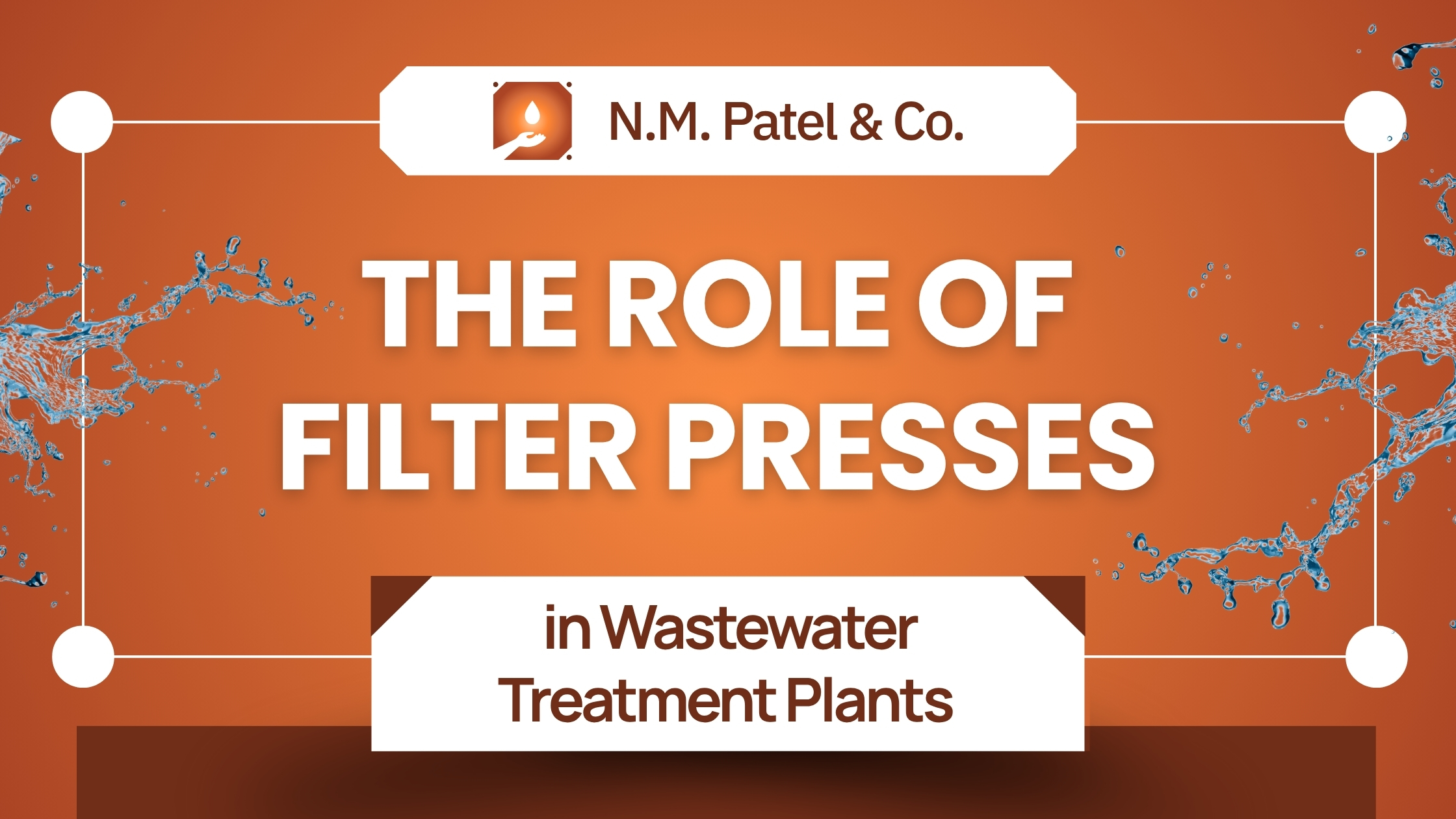Managing wastewater is one of the most pressing challenges of modern industry and urbanization. Treatment plants must not only purify water but also safely handle the large amounts of sludge generated during the process. Among the technologies used, the filter press in wastewater treatment has emerged as a reliable, efficient, and cost-effective solution for solid-liquid separation.
Filter presses help dewater sludge, minimize disposal costs, and enable water recycling. With stricter environmental regulations and rising demand for sustainability, wastewater treatment plants are increasingly turning to filter press technology. This article explores how filter presses work in wastewater treatment, their benefits, and best practices for implementation.
1. Understanding the Filter Press in Wastewater Treatment
A filter press is a piece of equipment designed for solid-liquid separation, widely used in industries ranging from mining to chemicals. In wastewater treatment, its main role is dewatering sludge—a byproduct of purification processes.
1.1 How a Filter Press Works
- Slurry (a mix of water and solids) is pumped into the press.
- Chambers formed by filter plates are filled with slurry.
- Pressure forces water (filtrate) out through filter cloths.
- Solids remain as a semi-dry “filter cake,” which can be removed and disposed of more easily.
To learn about the different designs, explore this complete guide to filter press types and applications.
2. Applications of Filter Presses in Wastewater Plants
Filter presses are used in multiple stages of wastewater treatment.
2.1 Municipal Wastewater Treatment
In city and town treatment plants, filter presses help reduce sludge volumes, lowering transportation and landfill disposal costs.
2.2 Industrial Wastewater Treatment
Industries such as textiles, pharmaceuticals, food processing, and chemicals use filter presses to treat wastewater before releasing or recycling it.
2.3 Heavy Metal and Hazardous Waste Removal
Certain industries produce wastewater with heavy metals and toxins. Filter presses are essential in removing harmful solids, ensuring compliance with environmental regulations.
3. Benefits of Using Filter Presses in Wastewater Treatment
The adoption of filter presses provides significant operational and environmental advantages.
3.1 High-Quality Dewatering
Filter presses produce drier cakes compared to other dewatering technologies like centrifuges, reducing waste volume by up to 80%.
3.2 Water Recovery and Recycling
Up to 95% of water can be recovered and reused within the plant, reducing freshwater consumption and operating costs.
3.3 Cost Efficiency
Lower sludge volumes mean reduced handling, transportation, and disposal expenses.
3.4 Environmental Compliance
By reducing pollutants, filter presses help treatment plants meet stringent discharge regulations and sustainability goals.
4. Components of a Filter Press in Wastewater Systems
Understanding key components ensures proper operation and maintenance.
- Filter Plates: Create chambers that trap solids during filtration. High-quality filter plates are critical for achieving consistent results.
- Filter Cloths: Separate water from solids and need regular cleaning to maintain efficiency.
- Hydraulic System: Provides the pressure required to compress plates and filter slurry.
- Cake Discharge System: Automatically removes dewatered cakes for disposal.
5. Challenges in Using Filter Presses for Wastewater Treatment
Like any equipment, filter presses face operational challenges.
5.1 Clogging and Fouling
Filter cloths can clog over time, reducing efficiency. Regular cleaning and maintenance are essential.
5.2 Energy Consumption
Although efficient, filter presses can be energy-intensive during the compression process. Automation and modern hydraulic systems help mitigate this.
5.3 Cycle Time
Filtration cycles may take longer compared to other methods, though newer designs are improving speed and throughput.
6. Best Practices for Optimizing Filter Press Operations
For wastewater treatment plants, maximizing performance requires strategic management:
- Pre-Treatment of Slurry: Use flocculants or coagulants to improve separation efficiency.
- Regular Plate Maintenance: Inspect and replace worn-out filter plates to ensure long-term reliability.
- Automation: Invest in automatic plate shifters and cloth washers to save labor and reduce downtime.
- Monitoring and Analytics: Use sensors and monitoring systems to track cycle times, pressure, and performance.
7. Future Outlook: Filter Presses in Sustainable Wastewater Management
As industries and municipalities face stricter environmental regulations, filter presses will play a bigger role in ensuring sustainability.
- Integration with Renewable Energy: Plants are exploring solar- or wind-powered filtration systems.
- Smart Filter Presses: IoT-enabled monitoring improves efficiency, reduces downtime, and optimizes cycle times.
- Circular Water Systems: With improved recovery rates, filter presses will enable closed-loop water systems, minimizing environmental impact.
The filter press in wastewater treatment is no longer just a cost-saving tool—it’s a central technology in achieving global sustainability goals.
Conclusion
The filter press in wastewater treatment has become indispensable for both municipal and industrial applications. By reducing sludge volumes, improving water recovery, and ensuring compliance with strict environmental standards, filter presses deliver operational efficiency and sustainability.
FAQs
Q1. What is the role of a filter press in wastewater treatment?
It separates solids from liquids in sludge, reducing waste volume and enabling water recovery for reuse.
Q2. How efficient is a filter press compared to other methods?
Filter presses often produce drier cakes than centrifuges, making them more efficient for sludge management.
Q3. What industries use filter presses for wastewater?
Industries like food processing, chemicals, mining, textiles, and pharmaceuticals use filter presses for efficient wastewater treatment.
Q4. How often should filter plates be replaced?
It depends on usage, but regular inspection is necessary. Damaged or worn-out filter plates should be replaced promptly to maintain efficiency.
Q5. Are filter presses environmentally friendly?
Yes. By reducing sludge volume and enabling water recycling, they support sustainable wastewater management practices.


